Contents
To cultivate the land, gardeners use not only a walk-behind tractor, but also primitive devices. Previously, they were made independently, but now you can find factory-made options. One of these tools is a miracle shovel called Plowman. In appearance, these are double forks that form a soil ripper. During work, the lifting of a layer of earth with a shovel Plowman occurs due to the lever from the effort of the hands, and not the back.
How to use the tool
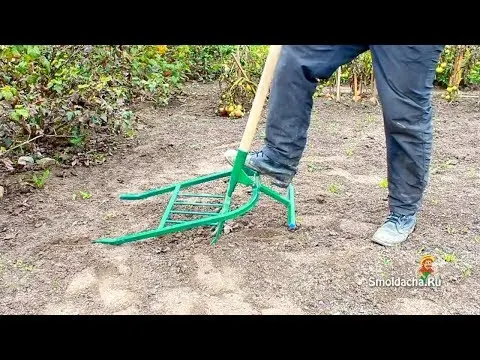
The principle of using a shovel is simple. Digging the earth occurs with an indent back of about 10–20 cm. To make it clearer, a person moves forward with his back, dragging a tool behind him. After installing the shovel on the ground, the working forks are pressed in. To do this, step on a special stop with your foot.
While loosening the soil with a Plowman’s shovel, pressing can also be performed on the upper jumper of the working forks. At first, this method may seem inconvenient due to the far location of this element. In addition, out of habit, the leg will cling to the stop. However, the developer initially envisaged just such a way of working. Over time, after several workouts, a person realizes that this is the most convenient and easiest option. After all, the indentation of the pitchfork into the ground does not come from the effort of the leg, but from the mass of the body. A person only needs to move his body forward a little.
This mode of operation will not respond with pain in the hip joint after processing 1-2 acres of the garden. With the acquisition of skills, the leg intuitively passes the stop to stand on the jumper of the working forks. The Plowman also has its drawbacks, but it is still easier to work with a tool than with an ordinary shovel.
The video demonstrates the work of a miracle shovel on solid ground:
Plowman shovel device
Before considering the drawing of a miracle tool, you need to understand the principle of its operation. The shovel consists of two forks. One part is stationary and the other is movable. When the working forks lift the soil layer, it passes through the teeth of the stationary part and the clods of earth are crushed. Thus, loosening occurs to a depth of 15–20 cm.
The plowman is produced in several modifications, differing in size. However, according to reviews, the miracle shovel Plowman is more in demand with a frame width of 35 cm. The tool weighs about 4,5 kg. At the same time, the frame length is 78 cm, and the working forks are 23 cm. The shovel has 5 teeth and usually goes on sale without a handle. On the diagram you can see the main components of the tool.
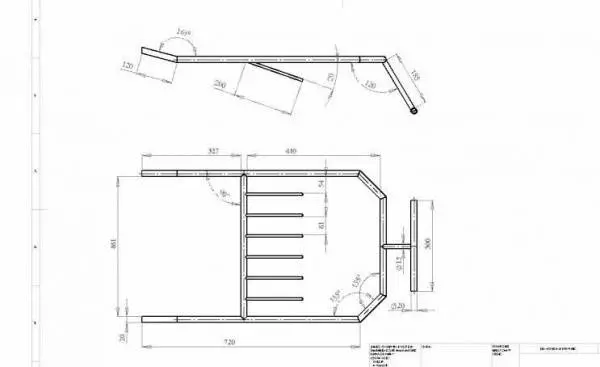
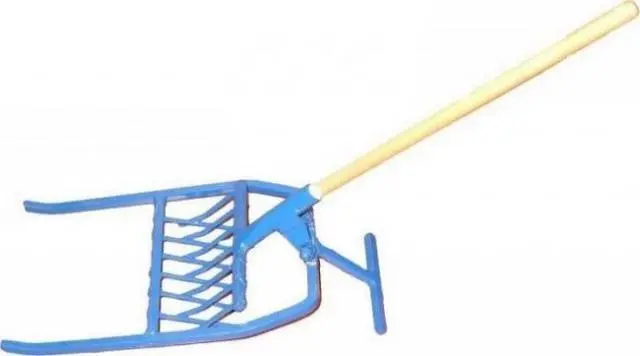
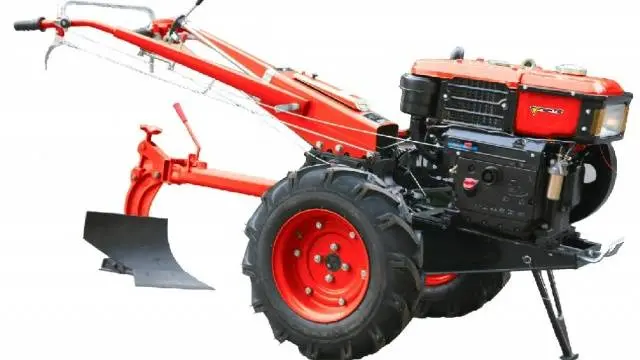
It can be seen from the drawing that the miracle of a shovel is a simple device. In addition, it does not pose a danger to a person to get injured during work. The working part is wide forks. They are fixed to the common frame by two stops, which ensure the mobility of the element. Teeth are welded to the stationary frame inside. The front is made up of two elements. It is a continuation of the frame. The back stop of the Plowman is shaped like the letter T.
The frame itself is made of hollow tube. Due to this, the lightness of the tool is ensured. The teeth are made from hardened steel. To work, a miracle shovel is planted on a wooden handle.
Miracle Shovel Abilities

The tool is designed to facilitate manual labor associated with loosening the soil. Compared to the traditional bayonet version, this device allows you to process about two acres of land in 1 hour. This keeps labor costs to a minimum.
Depending on the size of the shovel, in one pass a strip up to 43 cm wide prepared for a bed is obtained. If necessary, loosening can be done to the entire depth up to 23 cm or superficially, without completely driving the forks into the ground. During digging, the roots of weeds rise to the surface with teeth, but are not torn to pieces. This prevents them from further reproduction.
Why Plowman is better than a regular shovel
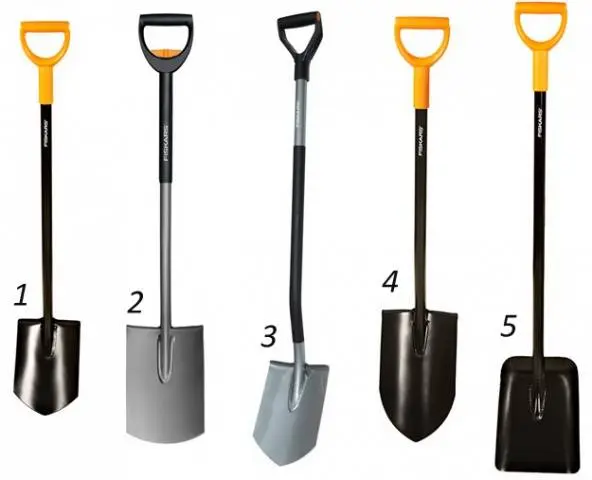
The main advantage of the Plowman is the need for less effort. After working for a couple of hours with a bayonet shovel, a person feels severe back fatigue, as well as pain in the hip joint. The plowman gets rid of this trouble.
As for tillage, after a bayonet shovel, you have to break up clods and level the ground with a rake. After the passage of the Plowman, a bed is left ready for planting. The tool can even quickly dig up a small vegetable garden for planting potatoes.
Another advantage of the Plowman is the pitchfork. The solid cutting blade of a bayonet shovel separates not only the roots of weeds, but also cuts down earthworms. The forks have narrow teeth, which are in no way capable of harming the useful inhabitants of the earth.
Why Plowman is better than a walk-behind tractor

Of course, a cultivator or walk-behind tractor is many times more productive than hand tools. However, here you can find the advantages of a miracle shovel. Let’s start with economy. The plowman does not require refueling of oil and fuel, purchase of consumables and spare parts for repairs.
With a walk-behind tractor, it is not always possible to get into hard-to-reach areas of the garden. In addition, the unit has an impressive weight, and has the ability to bounce on solid ground during cultivation with a cutter. After several hours of such work, a person feels severe fatigue in the arms and back.
Making a plowman with your own hands
Of course, this tool is easier to buy, but if there is metal and welding at home, then why not make the Plowman yourself. There is nothing difficult in this. You just need to carefully read the diagram.
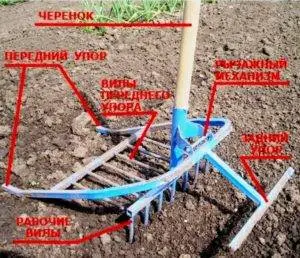
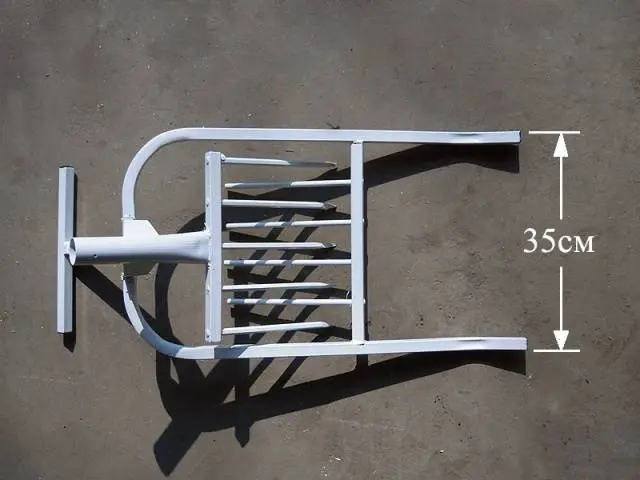
The width of the homemade Plowman depends only on his desires. With an increase in this indicator, the work process is accelerated, but at the same time, fatigue is accelerated. It is usually optimal to make a tool with a width of 35 to 50 cm, but no more.
The assembly principle of the structure is as follows:
- For the manufacture of fork teeth, hardened steel rods are selected. Flat bars up to 20 mm wide or rebar are suitable. The number of bayonets depends on the width of the frame. They are welded, adhering to the minimum step – 100 mm.
- In order for the fork teeth to easily enter the ground, they need to be sharpened. To do this, grinders make cuts at an angle of about 30о. For chernozem, the cutting angle can be reduced to 15о, but such bayonets will become dull faster.
- Next, make a carrier bar. Here you can use reinforcement, but then the weight of the shovel will increase. It is better to give preference to a square pipe of at least 10 mm.
- The base for the handle is welded from a piece of round steel pipe with a thickness of 50 mm.
- The thrust bar is bent in an arc from sheet steel with a minimum thickness of 5 mm. At the bend, it is welded to the base for the handle, and the opposite two ends are then fixed to the bar of the stationary frame.
When all the elements are welded, you will get a working moving part of a miracle shovel. Next, you need to make the second stationary half. It is made in the same way, only the teeth need not be sharpened. The frame is bent from a square tube so that two stops form in front. A T-shaped stop is welded on the back of the shovels. The connection of the two parts of the shovel is made movable. To do this, lugs are welded to the carrier bar and the stationary frame, after which the two elements are connected with a bolt or stud. The final work is the installation of a wooden handle.
Reviews
Instead of summing up, let’s take a look at the reviews of gardeners about the miracle shovel Plowman.









